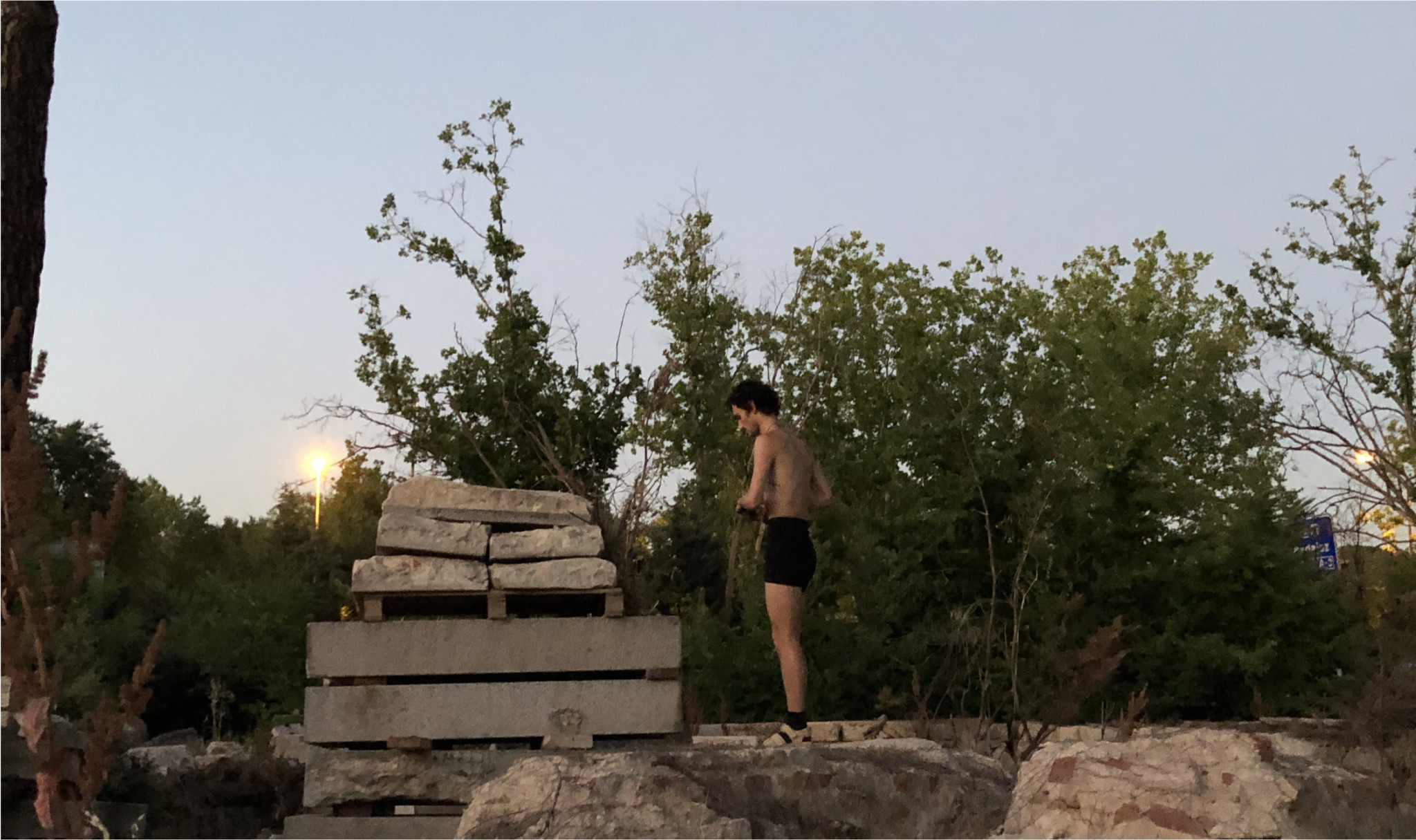Soft Matter,
Deep Time
Date
June 30th - July 2nd
Typology
Installation / Exhibition
Space
Taller de Cantería
Casa de Campo
Collaborators
Javi Cruz, Jacobo Cayetano, Zuloark
Taller de Cantería, Roque Fermín
Location
Madrid
As part of Bosque Real 2022, curated by Jacobo Cayetano and Javier Cruz, we invite experience and estrangement to be part of a complex ecosystem, through a series of interventions at the Taller de Cantería de Madrid, blurring the line between nature and culture. Soft Matter, Deep Time activates a multi-species framework where biology, geology, and fiction dissolve.
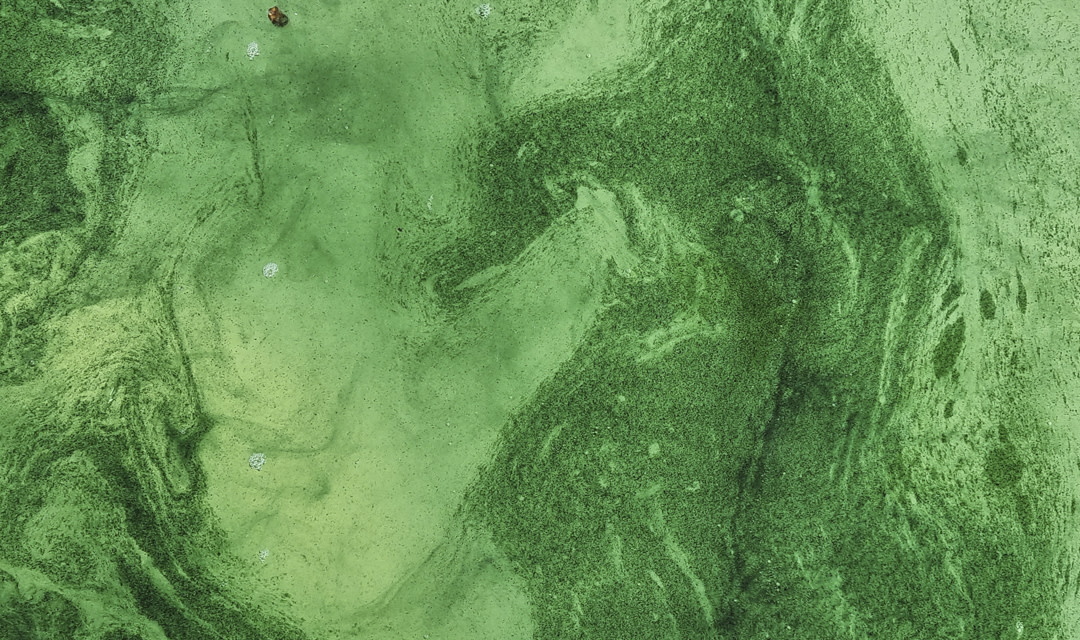
A charged atmosphere that transforms reality into an amalgam of fiction, material, and temporal. The resting stones show the fatigue of the monument, the exhaustion of the stone to represent and symbolize the human. Sculpture asks to be stone, the hard mantle of the inert world, to lose its form.
On the head of a statue some plants sprout, which install their roots between the cracks of a granite mane. Ferns grow on a marble basin, before the reflection of waters of strange colors. Entering this space invites us to contemplate the fictitious strata of a time in composting.
An abandoned landscape
is reconstructed, a place that demands constant maintenance, demonstrating the complexity of attending to life in programmed chaos.The place transforms time into the matter. It becomes
stratification
, an anarchic cosmology of pasts that opens to the possibility of infinite futures. A web of interspecies relations, a multiplicity of performative existences.Sculptures
become geology, marble troughs become universes of stagnant waters and a termite mound orchestrates a summer sunset with its melody. Realities dissolve between the penumbra of a deep time and the elasticity of its soft matter. Through interventions in specific places in the environment and a series of devices that blur the natural and cultural lines, we invite the experience and estrangement to be part of a complex ecosystem. Soft Matter, Deep Time activates a multi-species framework where biology, geology, and fiction dissolve.Daedalus at Dusk
A sand sculpture in the center, a mound of water, salts, and silica. Structures and organisms joined together, compacted, collapsing. The strange architecture of the grain, of the clast, of the clay. Sifted by stomachs of minute size, the defecated matter accumulates in overlapping particles. Crags and outcrops of earth. Tombolos. Isthmuses. Rocks pierced with deep holes.
Arms burrow into form, insects burrow into the matter. Digging, searching, piling up the layers of clay that compose it. Improvisation in anticipation of what will sound. What to find among the stone and dust. Aurally. To feel it sound like our own, a murmur that we cannot even hear. Another time, another frequency. To see, through our hands and feet, the sounds of the world, the turmoil of the earth itself, its voice reverberating in and out of us.
We are not alone; we never have been. All around us everything lives and breathes. Every speck of matter rustles in this vast body. It makes the world vibrate with life. Everything is connected to everything, all things are part of another. We too are things. We are all sculptors, humming, making noises, looking for the depths of the burrow as a possible escape from the labyrinth.
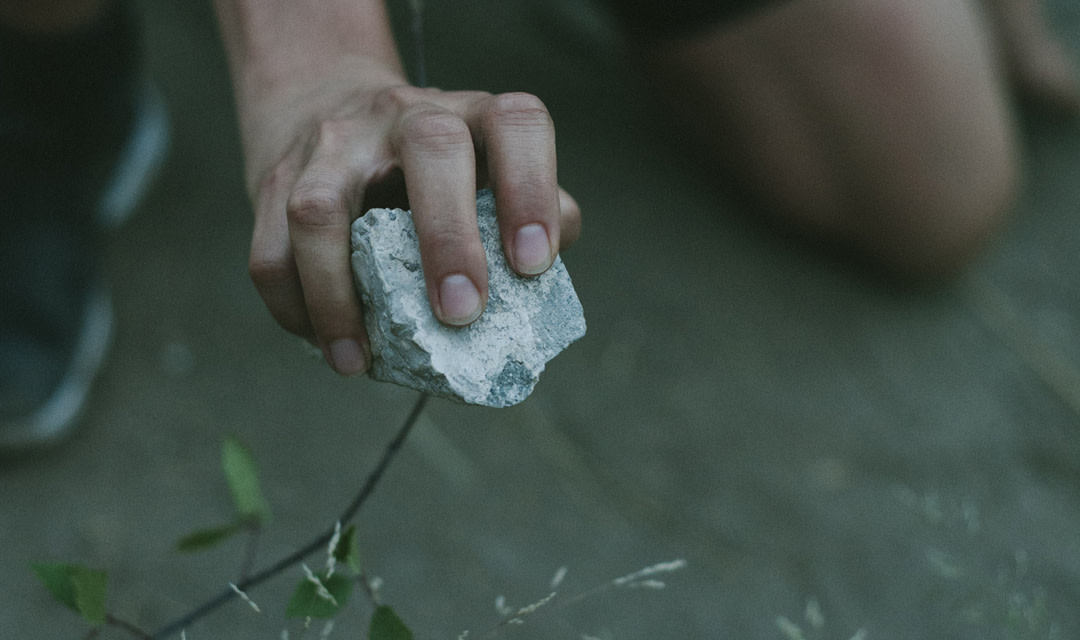
Eruca Leo
In the
Erucas
family, the petals grow in the shape of a cross. Its flowers, white to yellowish in color, have purplish cracks, they look like skins with veins that water the plant from the outside in. The erucic acid is an aphrodisiac, it awakened the drowsy in Virgil's poems. The queen flower, growing on the arugula, looks out in search of an insect that pollinates it. From among the wheat, seven lion's heads peep out. Like other felines, they cannot digest plants. They have neither enzymes nor a digestive tract prepared to break down their cellulose. Nor can their teeth crush them. They do not know how to ruminate. Between their stomachs and the flower, there is an impossible metabolism, an infinite distance; their matter will never mix. The lion observes the plant, between the stamen and the gastric juice the eye lights up. The pupils of the huge stone cat have stained a strong blue. For an instant, in its retina, visual digestion occurs, which intoxicates it and makes it blink. Then the flower dies.Fog and Stone
In the center of the quarry sinks a blue cement vessel. Its edges are full of cracks, and fissures through which water seeps. An empty fountain cannot harbor life. In its walls, the echo of bugs is lost and the croaking of frogs disappears. When its pores are sealed, the emptiness becomes a container again. Concave space, home. The surface becomes translucent, the hollow is flooded with a milky liquid mixed with granite dust and organic matter. This mixture stains and opacifies the bottom creating an opaline mirror. Dust and water. White and green. Fog water and stone. Bringing a stony hole back to life. The puddle is the origin of the world.
A Thousand Blind Mammals
Long before there were flowers, the world was covered by a blanket of green. Primitive mosses, hornworts, and low-growing liverworts are rooted to the ground. The first ferns sprouted 360 million years ago: their vascular systems helped them transport water to their limbs to gain height. They are said to be living fossils, their leaves always the same, identical throughout history and time. When the heat comes, the plant rests at the root, it becomes invisible to the eye. Behind the piles is a trail of footprints, almost erased by mud. The king's horses bend their necks to drink from the marble. They return to the stables with wet mouths. Two carved and polished stones reflect their reddish veins in the water, and prehistoric plants sprout from the center. Ferns are poisonous to horses. To see a fern in summer is impossible. You can no longer see
Alfonso XII's horses resting
in the Casa de Campo. Human blindness. Equine blindness Horses drinking from the red marble fountain.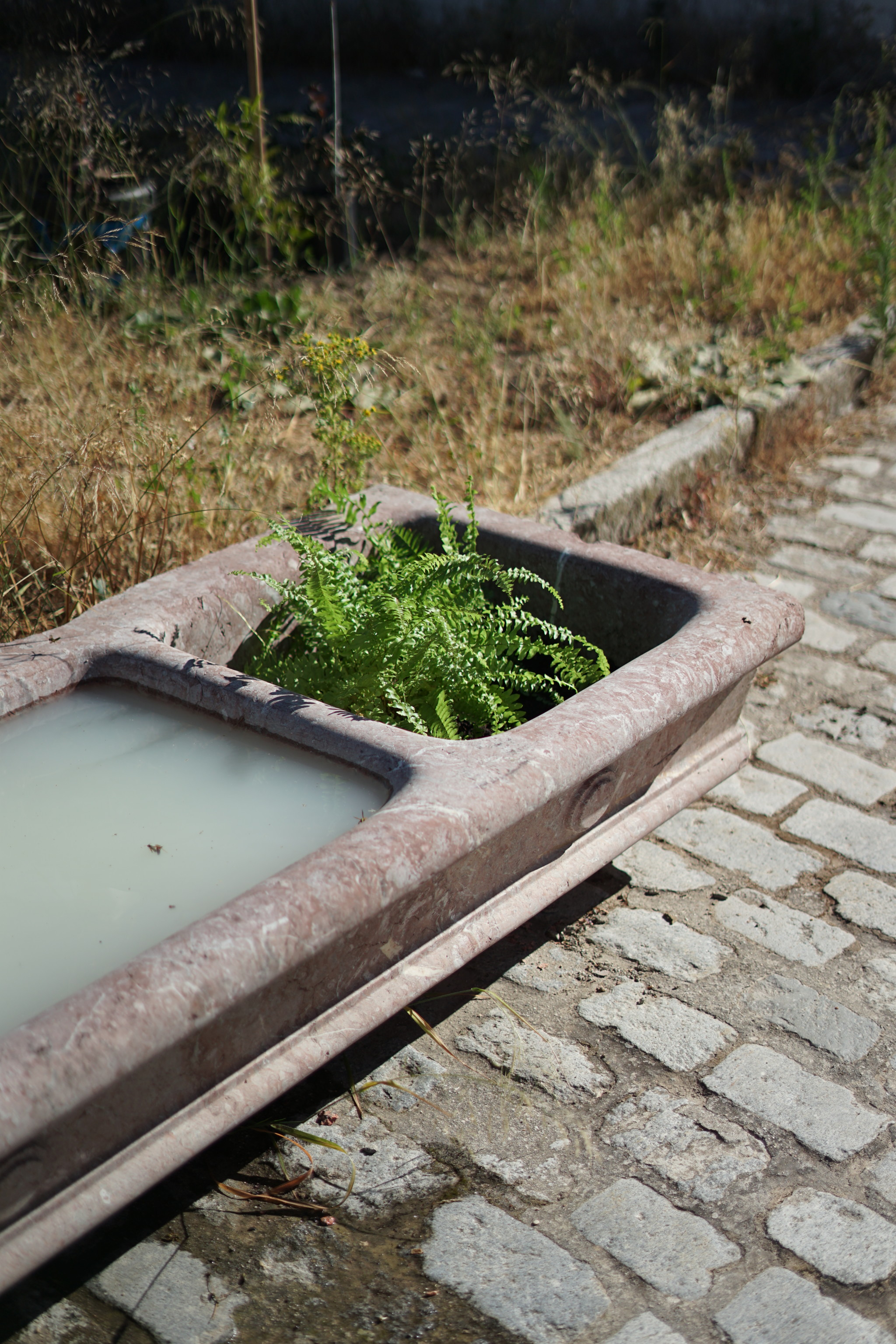
From a solid bowl, from an opaque rock
From an opaque rock, clear water gushes forth. The solid bowl contains the clarity. Drink, traveler. Pay attention. Drink.
Ursula K. LeGuin. Hard Words, The Eternal Homecoming.
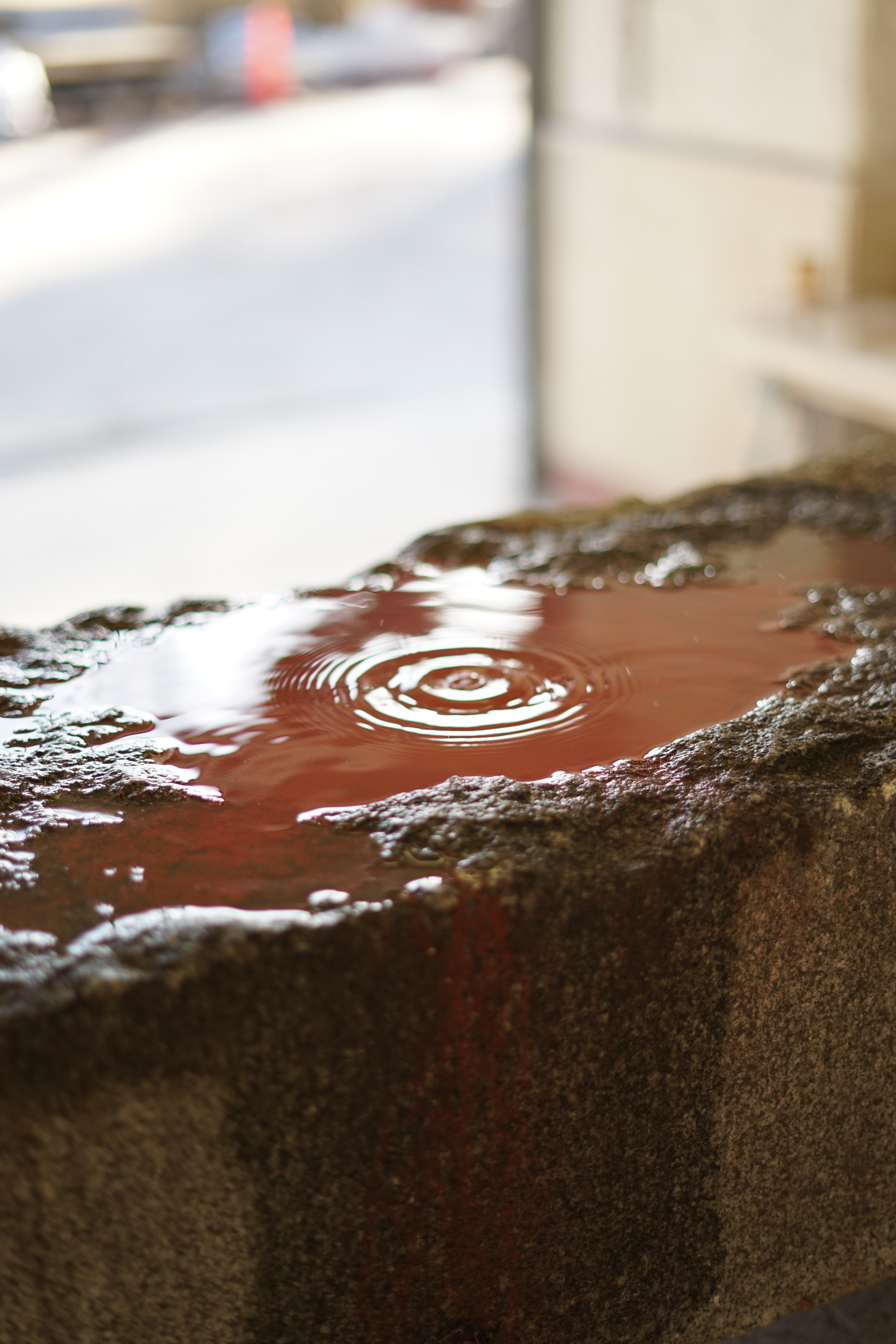
There is a stone on top of a stone. There is a stone with a hole in the center, and a drop falling and piercing, slowly, and crossing it from side to side. Algae, fungus, yeast. Rust and lichen. On the rock, hairy and ceramic, the liquid mixes before becoming hard. The drop keeps falling and repeats the fall. The drop falls. One after another One after another. Another one. In the geological cycle, the drop is a beginning. In the eternal and constant cycle.

Deep Time
A column that resonates with the echoes of ordered chaos. It is a mountain of carved earth and rock, delimited and coded by strata of colors. Gray, white. Stone and cement. Brown Earth. Gray Cement. Plastic Pink. Plastic Yellow. Brown Black earth at the bottom, more earth on top. Gray. Stones, sand, and a small unrecognizable object peeking out. Each layer, very thin, includes part of the subsoil and the atmosphere, and houses all the biological activity of the Earth. The world decomposes, digesting decay. A circular compost that becomes hard over time. The column becomes stone. In anti-monument. Stratum and fiction. Nature and culture. An amalgam of intermingled layers blurs the boundaries and allows exchange.
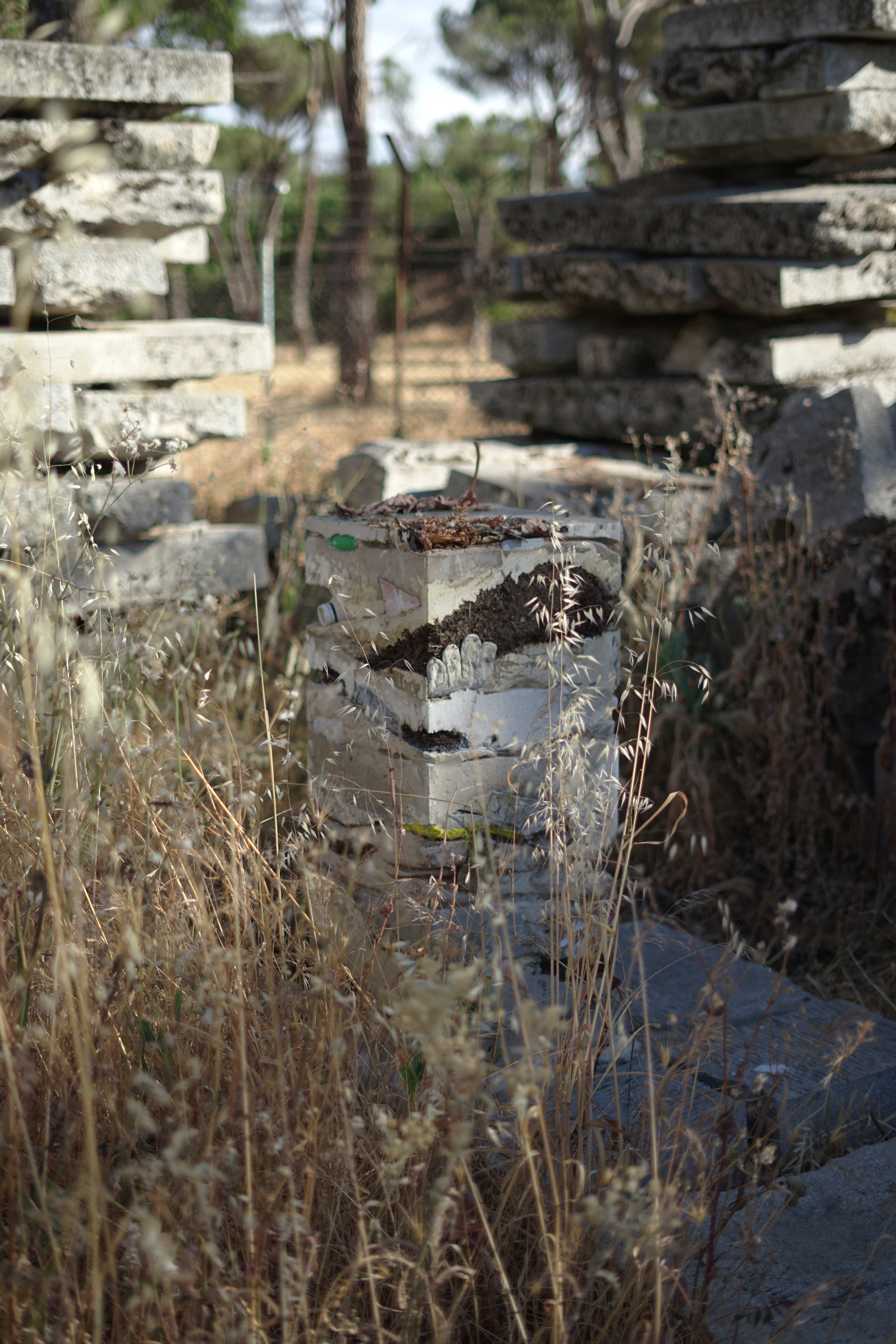
Soft Matter
Inhabiting the earth can also be a loving gesture, a display of caresses, eroticism, and intimacy. To dare to be matter traversed by matter, to strip oneself of the human, to celebrate symbiosis, to be multiple, to co-inhabit.
The presence of a body among other bodies makes it wet and trembling. Each one has a different time, a unique history, and a material genealogy that intertwines. But they do not share a sensory structure. And yet water makes you wet. So does the earth. And the plants. It splashes in the encounter. The world is wet, warm, and fecund at this moment.
Many things will happen, a kind of dance that goes back and forth, and then back again. It has no end and no beginning. Or better, it ends several times and begins again. Another twist, a slow motion. Exchanges of energy in an open succession of movements, each one unique and plural. Each element has its own history and future, its own memory, its own rhythm, and its own way of thinking. Some move at a speed faster than any of their steps allow. Others are at a slowness that their body can never perceive or reach.
